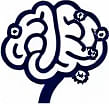Mental Models for Team Dynamics
 by Thaddeus Blanda
by Thaddeus Blanda
Mental models offer practical tools to enhance how teams function and collaborate. By applying these frameworks, individuals can foster better communication, resolve conflicts, and boost productivity in professional and personal settings. Explore key strategies for cognitive development in groups.

Team dynamics represent a core aspect of group interactions, where individuals work together to achieve shared goals. In this context, mental models serve as cognitive frameworks that shape how people perceive and respond to group behaviors. For instance, recognizing patterns in team interactions can lead to more effective collaboration.
The Basics of Mental Models in Groups
Mental models are internal representations that guide decision-making and problem-solving. In teams, these models influence how members interpret roles and responsibilities. One useful framework is the idea of group stages, which helps predict and manage team evolution. This approach allows leaders to anticipate changes and adjust strategies accordingly.
Consider how team dynamics evolve over time. Early phases often involve building relationships, while later ones focus on task completion. By applying mental models, groups can address potential issues before they escalate.
Applying Mental Models in Psychology
In psychology, mental models provide insights into human behavior within teams. These frameworks draw from cognitive development theories, showing how individuals process information in social settings. For example, awareness of cognitive biases can improve group decision-making.
Professionals often use these models to enhance interpersonal skills. Cognitive development plays a key role here, as team members learn to adapt their thinking based on group feedback. This process encourages personal growth and better collective outcomes.
Lists of common mental models can aid in this application:
- Recognition of shared assumptions to align team visions.
- Identification of individual strengths for balanced contributions.
- Encouragement of open dialogue to prevent misunderstandings.
Practical Strategies for Business Settings
In business, mental models help optimize team performance. Leaders can integrate these frameworks to promote efficiency and innovation. For instance, mapping out interaction patterns allows for proactive adjustments.
<Strong>Business strategies benefit from mental models by fostering adaptability. Teams that regularly reflect on their processes tend to achieve higher results. Practical steps include regular check-ins and role clarification.
Here are some effective techniques:
- Use simple simulations to test team responses.
- Encourage diverse perspectives to enrich discussions.
- Monitor progress through feedback loops.
Challenges and Solutions
While mental models offer advantages, teams may face obstacles like miscommunication or resistance to change. Addressing these requires consistent effort and reflection.
For example, differing mental models among members can create friction. Group psychology suggests that aligning these frameworks through shared activities can build cohesion. Over time, this leads to stronger team bonds and improved outcomes.
Solutions involve creating environments where experimentation is valued. By focusing on core elements of team interactions, groups can overcome barriers and enhance their overall effectiveness.
Benefits for Lifelong Learners
For curious individuals and lifelong learners, exploring mental models in team dynamics opens new avenues for personal and professional growth. These frameworks not only improve current interactions but also build skills for future challenges.
Engaging with mental models encourages a deeper appreciation of human behavior. Whether in psychology or business, this knowledge empowers individuals to contribute more meaningfully to groups.
In summary, integrating mental models into team dynamics provides a foundation for better collaboration and success.
